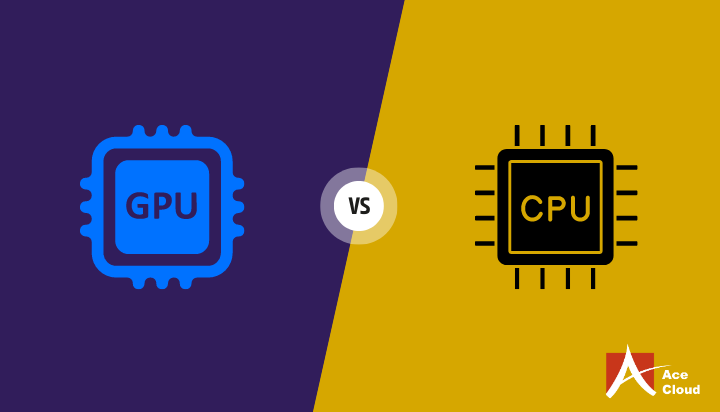Powerful computing solutions are rapidly becoming the bedrock of all industries. Be it Machine Learning applications, speech-to-text transcription, immersive 3D gaming, real-time Big Data analytics or dynamic visual simulations, highly efficient processors are revolutionizing every single industry and economic sphere.
And it is not only Graphics Processing Units (GPUs) and Field Programmable Gate Arrays (FPGAs) – Central Processing Units (CPUs) have also begun playing significant roles in High-Performance Computing systems (HPC).
High-Performance Computing is an umbrella term that includes conglomerations of compute servers (called nodes), storage resources (including on-chip high-bandwidth memory) and networking infrastructure interweaved to function in tandem and deliver highly-optimized performance. HPC is often, albeit mistakenly, used synonymously with Supercomputing, though the latter is a subset of the former.
The global market for HPC is projected to touch USD 50 billion by 2027. Organizations with less than 1000 employees will predominantly power this surge in HPC deployment as they expand their IT infrastructure to Cloud-based HPC solutions. HPC solutions assist organizations amplify their productivity and competitiveness in cutthroat industries.
Are you inquisitive about the role of CPU and GPU in HPC clusters? Do you ever wonder about the viability of using GPU and CPU in HPC applications? If you have these questions, this article is for you.
Unleash The Power of Cloud-based GPU Computing Try for FreeChat to Know More
Role of CPU in HPC
Rightly regarded as the “brain of the computer”, the CPU is the main microprocessor in a computer. It is a tiny semiconductor fabrication consisting of logic gates and electronic circuits that execute the instructions and programs needed to run a computer system.
A CPU’s internal circuitry works much like an animal brain, though it depends on various programs to fetch, comprehend and execute instructions supplied to it. It performs logical operations, Input/Output (I/O) functions, arithmetic calculations, etc. It also allocates commands to sub-systems and associated components.
Modern CPUs are multi-core, i.e., they comprise of two or more processing cores (the dual and octa-core terminology so ubiquitous in Intel advertisements). Multi-core processors enhance performance, reduce power consumption, and facilitate efficient data/ instruction processing.
At the heart of every computer lies a CPU – be it single or multi-core. HPC systems also rely on a CPU to handle the initial operations and manage the core functionalities like executing OS instructions, fetching data from RAM and cache memory, controlling data flow to the buses, managing interconnected resources etc.
All preliminary operations are handled by the CPU. In HPC applications, the CPU provides precision to the large-scale calculations and also instructs the other components (including the GPU) to perform their complex, resource-intensive computation.
Role of GPU in HPC
A GPU is a specialized processor originally designed for rendering high-res images and immersive gaming graphics and animations. It is now utilized by individuals and enterprises for massive mathematical operations, training and deploying AI/ ML systems, and undertaking large-scale data analytics across a wide variety of industries.
GPUs generally comprise of hundreds or even thousands of cores for delivering unprecedented parallel processing capabilities. Unlike CPU cores that allot multiple tasks processing time in a sequential manner following a preemptive mechanism, all the cores within a GPU simultaneously execute the same mathematical instructions on different datasets.
This is known as Single Instruction, Multiple Data architecture (SIMD). GPUs are inherently designed to endure intense workloads involving repetitive execution of complex instruction sets – this makes them immensely well-suited for operations involving real-time data analytics, blockchain validation, AI/ ML training, neural network applications, etc.
Relying only on CPUs for such complicated workloads often leads to bottlenecks and delivery delays. Thus, enterprises have begun demanding GPU-assisted HPC setups for these workloads.
Whereas the CPU effortlessly juggles multiple tasks, a GPU performs a single task with all its cores dedicated to accomplishing said task before moving on to the next one. A GPU emphasizes high throughput and consumes less memory than a CPU.
Achieving embarrassingly parallel processing and high throughput allows a GPU to undertake computation operations quickly and efficiently vis-a-vis a CPU.
Also Read: GPU Vs. CPU – Which One is Right for Data Analytics?
GPU vs. CPU – The Differences
HPC systems use both CPUs and GPUs to perform advanced computations. However, both hardware follow distinct operation architecture and solve different purposes within an HPC. Some ways in which
GPU and CPU differ are:
| Central Processing Unit (CPU) | Graphical Processing Unit (GPU) |
| CPU performs serial processing to handle various applications and the operating system within the HPC. | GPU performs parallel processing to handle massive external workloads assigned to it, such as ML model training, data mining operations, high-res graphics rendering, etc. |
| It consumes more memory than GPU because it performs multiple tasks. All these tasks should first load into the main memory before being delegated to the processor. | It consumes less memory than the CPU because it executes the same instruction set over and over across different data points. |
| HPC systems rely on CPUs. Generally, at least two CPUs are included per HPC node for better processing. | HPC systems may or may not include GPUs, but the inclusion undoubtedly accelerates the entire system’s performance. These GPUs can be deployed as on-premise arrays or accessed via Cloud computing. |
| The speed of CPU is less compared to GPU. It is because a CPU has fewer cores. | GPUs have hundreds or even thousands of cores undertaking data processing simultaneously. GPUs, thus, are significantly faster than CPUs. |
| CPU cores are much more powerful cores and offer substantially more precision. | GPU possesses more cores, but these are less efficient and offer less precision vis-a-vis CPU cores. |
| In HPC clusters, CPUs are ideally suited for serial instruction processing. | GPUs are not suitable for serial instruction processing, and slow down algorithms requiring serial execution compared to CPUs. |
| CPUs come with large local cache memory which empowers them to handle multiple sets of linear instructions. | Cache memory associated with GPUs is of less size. Hence, GPUs can process similar types of instructions faster. |
| CPU is a mature technology & already reaching its limit (according to Moore’s law) of getting smaller yet more powerful. | GPU technology is relatively young and leading manufacturers are continuously expanding the number of cores and interconnectivity possibilities, thereby furthering the scale of HPC. |
| CPU gives prominence to low latency. | GPU gives prominence to high throughput. |
| CPUs are flexible and can handle a variety of general tasks such as OS administration, network security, I/O operations, primary memory management, etc. | GPUs are less flexible and are predominantly used for sophisticated mathematical operations such as real-time data analytics, ML model training, graphics rendering, Raytracing, etc. |
Also Read: GPU Vs CPU: Which One is Right for Image Processing
GPU vs CPU for HPC
Comparing GPU and CPU, both have unique duties within the HPC cluster. The CPU remains the key processor running the operating system and other applications like firewalls in the HPC cluster. Similar to how computers cannot run without a CPU (the primary processor), a HPC cluster also cannot.
GPUs are mighty processors with multiple cores capable of effortlessly handling large and complex calculations. Assisted by the CPU and well-written instruction sets orchestrating the HPC cluster, the GPUs act as a hardware accelerator, amping up resource-intensive tasks that form the backbone of AI/ ML development, NLP, ANNs etc. We can design a HPC cluster without a GPU, but it will eventually prove inadequate for handling heavy-duty computation.
Thus, it is evident that CPU and GPU are both simultaneously necessary to run a HPC system. We cannot run a HPC without a CPU. And without a GPU, a High-Performance Computing system will not perform highly!
Pros and Cons of CPU in a HPC Cluster
| Pros | Cons |
| CPU works independently within a HPC cluster. | It is not a specialized processor.
|
| CPU offers high accuracy when handling floating-point arithmetic operations. | It cannot smoothly or quickly perform tasks referencing massive datasets or involving immense calculations. |
| CPU processing can be enhanced by increasing the number of cores within the unit. | It generates heat as it remains active unless turned off and keeps processing. |
| It can perform logical and mathematical operations with more precision. | |
| CPUs are flexible and can carry out a wide range of tasks. |
Pros and Cons of GPU in a HPC Cluster
| Pros | Cons |
| Given their parallel processing architecture, GPU can handle resource-intensive tasks easily. | GPU cores are inferior vis-a-vis CPU cores and offer less accuracy in floating-point calculations. |
| One can integrate more GPUs in an HPC cluster to enhance the processing potential of HPCs. | GPU are exorbitant and require expensive networking and storage resources. |
| GPU consumes less memory to handle the same volume of data. | |
| GPU utilizes all its cores dedicatedly to perform a single task, finishing the operations quicker than CPU. |
Conclusion
It is evident that both CPU and GPU are necessary for optimum functioning of an HPC system, and both must work in tandem to support accelerated performance across workloads. Whereas the CPU shoulders the responsibility of managing OS instructions, hardware and I/O operations handling, the GPU facilitates the operations that enable the HPC system to deliver the workloads it is designed for.
Having more GPUs is certainly excellent for providing extraordinary thrust to HPC workloads, but GPU are exorbitant and necessitate investments in IT infrastructure and manpower. It is advisable to opt for Cloud GPU resources. Let Ace Cloud Hosting overawe you with our competitively priced offerings.









